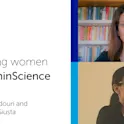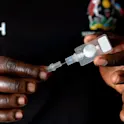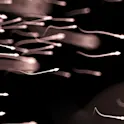1,071 news posts

Frontiers news
07 Oct 2022
Working with societies – join us in conversation with Society Street
How can publishers best support societies in the increasingly complex landscape of scholarly publishing? Frontiers’ head of publishing partnerships, Robyn Mugridge, will join a panel of scholarly publishing experts from across the industry to discuss this, and other key questions, during an online conversation on publishing, societies, and open access on Tuesday 11 October. Organized by Society Street, a forum for leaders and future leaders of scholarly societies, the online discussion will be the second in a two-part series for and about society publishers. The panel, which also includes representatives from Elsevier, MDPI and Wiley, will reflect on the direction of society publishing, the challenges facing societies, and the ways that societies and their publishing partners can respond to these together. Frontiers’ head of publishing partnerships, Robyn Mugridge, said ‘As a representative of a fully gold open access publisher, I am pleased that Frontiers is able to contribute to this fantastic event, aimed at supporting societies. Society publishing is evolving rapidly, and it is critical for publishers to be fully and directly engaged in conversations about the issues that matter most to our society partners. Thanks both to Society Street and my co-panellists for creating a forum for this valuable […]

Featured news
07 Oct 2022
Scientists peel back ancient layers of banana DNA to reveal mystery ancestors
By Mischa Dijkstra, Frontiers science writer Researchers compare the genomes of more than 200 wild and domesticated varieties of bananas and show that three extra ancestors, either subspecies or distinct species, must have been involved in the domestication process. They also deduce the geographic regions in Australasia where these mystery ancestors lived. If they haven’t gone extinct, they are likely threatened and it’s urgent to find and protect them, to preserve genetic diversity that could help breed better bananas. Bananas are thought to have been first domesticated by people 7,000 years ago on the island of New Guinea. But the domestication history of bananas is complicated, while their classification is hotly debated, as boundaries between species and subspecies are often unclear. Now, a study in Frontiers in Plant Science shows that this history is even more complex than previously thought. The results confirm that the genome of today’s domesticated varieties contains traces of three extra, as yet unknown ancestors. ► Read original article► Download original article (pdf) “Here we show that most of today’s diploid cultivated bananas that descend from the wild banana M. acuminata are hybrids between different subspecies. At least three extra wild ‘mystery ancestors’ must have contributed to this […]

Featured news
30 Sep 2022
‘Love hormone’ revealed to have heart healing properties
By Mischa Dijkstra, Frontiers science writer Image: Shutterstock.com Researchers show for the first time that the neurohormone oxytocin has a previously unsuspected function in both zebrafish and human cell cultures: it stimulates mature cells in the epicardium of the heart to become stem-like cells, which can replace heart cells lost after damage. This discovery could one day be used to stimulate the regeneration of the human heart after a heart attack. The neurohormone oxytocin is well-known for promoting social bonds and generating pleasurable feelings, for example from art, exercise, or sex. But the hormone has many other functions, such as the regulation of lactation and uterine contractions in females, and the regulation of ejaculation, sperm transport, and testosterone production in males. Now, researchers from Michigan State University show that in zebrafish and human tissue cultures, oxytocin has yet another, unsuspected, function: it stimulates stem cells derived from the heart’s outer layer (epicardium), to migrate into its middle layer (myocardium) and there develop into cardiomyocytes, muscle cells that generate heart contractions. This discovery could one day be used to promote the regeneration of the human heart after a heart attack. The results are published in Frontiers in Cell and Developmental Biology. […]

Climate action
29 Sep 2022
UK politicians lack awareness of the links between climate change and mental health
By Lucy T Pirkle from the Department of Brain Sciences, Faculty of Medicine, Imperial College London, UK Image credit: WikiWitch / Wikimedia Commons It’s essential that today’s politicians and decision makers recognize the many and severe risks that the climate crisis poses not just for our physical health, but also for our mental wellbeing. Unfortunately, at least in the UK, politicians so far have demonstrated little awareness of the direct and indirect links between climate and mental health. That’s the worrying conclusion of a recent study in Frontiers in Public Health, where researchers mined the public records of all debates in the UK’s House of Commons and House of Lords between 1995 and 2020. The authors found that on the few occasions that speakers showed any awareness of these links, the focus of their speeches was always on the association between flooding and anxiety. But no-one mentioned any of the other proven mental health impacts of climate change. For example, higher temperatures are associated with higher suicide rates and more hospitalizations for mental disorders. Likewise, extreme weather events such as wildfires, floods, droughts, and severe storms are associated with worse mental health in affected populations. And research has shown that […]

Featured news
27 Sep 2022
4 articles you need to check out on the future of behavioral neuroscience
By Angharad Brewer Gillham, Frontiers science writer Image: Shutterstock.com How mice and rats help study depression Mice and rats are key model animals that help us understand how depression works and how to treat it. A huge number of people around the world live with this devastating disorder, but its causes and symptoms are so varied that it is hard to test new treatments and to reproduce experiments to prove those treatments work. Scientists writing in Frontiers in Behavioral Neuroscience reviewed the evidence for rodent models of depression and found that models imitating social stress or a disrupted early life have had some success. Meanwhile, models with behavioral stressors designed to induce helplessness are easily compared to other labs’ work but aren’t complex enough to model depression. A key element of depression is anhedonia, struggling to enjoy life, but this is extremely difficult to model in nonhuman animals. The most popular options available test preference for sweet tastes. The team concluded that the best option is to provide mice with a more naturalistic setting to live in, with more space to socialize and to follow their own inclinations. This helps avoid experimenter influence and allows spontaneous behavior from the mice […]

Featured news
27 Sep 2022
Sugary poo could be used to lure destructive plant pests to their doom
By K.E.D. Coan, science writer Aggregation of spotted lanternflies, Lycorma delicatula. Image credit: Jana Shea / Shutterstock.com Spotted lanternflies send signals with their honeydew excretions, shows a new study. Scientists are researching how this damaging invasive species communicates in order to better manage the pest problem. This research provides knowledge of how these insects find each other, as well as the first evidence to show that these signals appear sex-specific. Spotted lanternflies communicate through their smelly excretions, called honeydew, reports a new study in Frontiers in Insect Science. This invasive species has been impacting crops in the northeastern US, but little is known about how these insects locate each other for reproduction or feeding. According to this latest research, the insects’ honeydew emits several airborne chemicals that attract other lanternflies. Surprisingly, these effects are sex-specific, which may be the first known case of such signals in insects known as planthoppers. “This research is important because the first step to managing any pest is to understand their biology and behavior,” said Dr Miriam Cooperband of the United States Department of Agriculture Animal and Plant Health Inspection Service, Plant Protection and Quarantine Division (USDA APHIS PPQ) in the US. “As we learn […]

Featured news
26 Sep 2022
Phoebe Koundouri and Marina Della Giusta – Women supporting women
By Leticia Nani Silva , Rocio Caverzasi and Geraldine Clancy To celebrate International Equal Pay Day, we speak to the new Field Chief Editors of our Economics journals Professor Phoebe Koundouri and Professor Marina Della Giusta. Photo redit: Mrs Kattirzi via Frontiers Professor Phoebe Koundouri is an economics professor and world ambassador for sustainable development. She is listed in the 1% of most-cited women economists in the world. She holds two professorship titles, one at the Athens University of Economics and Business, and the other at the Technical University of Denmark. In addition to her academic roles, Professor Koundouri is the founder and Chair of the Alliance of Excellent for Research and Innovation on Aeiphoria (AE4RIA), President of the European Association of Environmental and Natural Resource Economists (EAERE), Chair of the SDSN Global Climate Hub, co-Chair of the United Nations Sustainable Development Solutions Network for Europe and Greece, Director of the Research Laboratory on Socio-Economic and Environmental Sustainability (ReSEES) at Athens University of Economics and Business, and of the Sustainable Development Unit & EIT Climate-KIC Hub Greece of the European Institute of Innovation and Technology at “Athena” Research and Innovation Center . Moreover, she is an elected member of Academia Europae […]

Featured news
26 Sep 2022
New research shows self-injectable contraception can enable women to take charge of their reproductive health
By Allen Namagembe, PATH, Uganda and Dr Jane Cover, PATH, US Image: PATH/Will Boase Allen Namagembe is a clinical epidemiologist, a biostatistician, and a global expert on self-injection. She is the Uganda Deputy Project Director and M&E Lead on the Uganda Self-Injection Scale-Up project at PATH. Dr. Jane Cover is a Research and Evaluation Manager on PATH’s Sexual and Reproductive Health team and the PATH-JSI DMPA-SC Access Collaborative. Now, they explain their team’s two studies, published in Frontiers in Global Women’s Health, where they used a human-centered design approach to develop and implement a pilot self-injection program in Uganda. Their results show how the program can increase women’s contraceptive access and options. For some, the term ‘self-care’ might conjure up images of skincare routines, bubble baths, and meditation. But in public health, self-care refers to the ability of individuals to self-manage aspects of their health care with the goal of promoting and sustaining health, preventing disease, and managing illness or disability. Grounded in evidence, agency, and equity, self-care interventions are key components of a holistic primary health care system and can help fill gaps in access to essential health services. We both conduct research in the sexual and reproductive health […]

Featured news
26 Sep 2022
Rodents are reservoirs for life-threatening disease, finds new study
By Tania Fitzgeorge-balfour, science writer Image: Vicky Outen/Shutterstock.com Fungal diseases in the human population are on the rise, so it is important for health authorities to understand where these pathogens come from. A new study has searched for fungi in the lung tissues of small mammals and found fungal pathogens that cause diseases in humans. This suggests that these rodents can serve as reservoirs, agents of dispersal, and incubators of emerging fungal pathogens. Fungal diseases in the human population are on the rise, so it is important for health authorities to understand where these pathogens come from. A new study, published in Frontiers in Fungal Biology, has revealed that small mammals could act as a reservoir for these fungal infections. “Our analysis, which specifically focused on lung pathogens that cause disease in humans, detected a wide range of fungi in the lung tissues of small mammals,” said Paris Salazar-Hamm, first author of this research, of the University of New Mexico. “We found that many of the rodents we sampled from areas in the Southwestern US were harboring the type of fungi that can cause lung infections in humans, such as the fungus that leads to Valley Fever, a disease that […]

Environment
23 Sep 2022
Ancient Maya cities were dangerously contaminated with mercury
By Mischa Dijkstra, Frontiers science writer Temple of the Great Jaguar at Tikal, a UNESCO world heritage site in Guatemala. Image credit: Leonid Andronov,/ Shutterstock.com A new review shows that the soil in the cities of the ancient Maya are heavily polluted with mercury. As vessels filled with mercury and objects painted with cinnabar have been found at many Maya sites, the authors conclude that the Maya were heavy users of mercury and mercury-containing products. This resulted in severe and dangerous pollution in their day, which persists even today. The cities of the ancient Maya in Mesoamerica never fail to impress. But beneath the soil surface, an unexpected danger lurks there: mercury pollution. In a review article in Frontiers in Environmental Science, researchers conclude that this pollution isn’t modern: it’s due to the frequent use of mercury and mercury-containing products by the Maya of the Classic Period, between 250 and 1100 CE. This pollution is in places so heavy that even today, it poses a potential health hazard for unwary archeologists. Lead author Dr Duncan Cook, an associate professor of Geography at the Australian Catholic University, said: “Mercury pollution in the environment is usually found in contemporary urban areas and […]

Environment
23 Sep 2022
Bees, blue light, and bacteria in beetles’ ‘back pockets’: Most viewed articles of August 2022
Image: Shutterstock.com by Angharad Brewer Gillham, Frontiers science writer Each month, Frontiers shines a spotlight on some of the leading research across a wide range of topics. Here are just some of the highlights that resonated strongly with readers on our news site in the month of August. 1. Modern pesticides make it hard for bees to keep on the straight and narrow Research published in Frontiers in Insect Science showed that common pesticides affected bees’ brains so that they couldn’t orient themselves properly. Bees exposed to sulfoxaflor and imidacloprid were tested on their ability to respond to stimuli that tricked them into thinking they’d been blown off course, a situation which required them to use their optomotor response to reorient themselves. Compared to control bees, they performed very poorly, reacting inappropriately or not at all to the stimuli. The problem seems to be caused by damage to the nervous system, but the exact mechanism is unclear. Since bees need this optomotor response to travel between different sources of pollen, and since these insecticides are widely used, this is a source of significant concern. The authors tested the optomotor response in walking bees rather than flying bees, so further research […]

Featured news
23 Sep 2022
Acquired immunity against random food allergens may protect some lucky people against Covid-19
By Conn Hastings, science writer A new study has investigated the potential of proteins in common foods to elicit protection against SARS-CoV-2. The researchers found that antibodies that bind SARS-CoV-2 can also bind to proteins in certain foods, viruses, vaccines, and common bacteria. The results suggest that exposure to such agents may confer some protective immunity to Covid-19, but further research is needed to confirm this. Why do some people become seriously ill with Covid-19, while others have no symptoms at all? The answer may lie in the proteins our immune system has previously been exposed to. A recent study in open-access journal Frontiers in Immunology finds that common foods, vaccines, bacteria and viruses may all prime our immune system to attack SARS-CoV-2, the virus that causes Covid-19. These agents all contain proteins that are similar to those found in SARS-CoV-2. As such, exposure to these proteins may train our immune system to respond when it encounters the virus. The study paves the way for new immunotherapies or vaccines that lead to stronger immunity against Covid-19. SARS-CoV-2: comfort in the familiar? SARS-CoV-2 is new, and the pandemic can make it feel like an alien invader from another planet. However, it […]

Featured news
22 Sep 2022
Teams of sperm swim more smoothly against the current
By Peter Rejcek, science writer The physics of how sperm navigate their way to an egg in mammals, including humans, are not well understood. The tendency for sperm to cluster together as they make their way upstream through the thickish, elastic-like fluid of the female reproductive tract is more than just random behavior. Researchers have found biological benefits for sperm working together that may have implications for fertility studies. It turns out sperm go against the flow better when they swim together. Despite the popular idea that the fastest and fittest male reproductive cell is the one that wins the fertilization race, research has shown that spermatozoa often team up to navigate the female reproductive tract in a wide range of mammalian species. A new study published in the journal Frontiers in Cell and Developmental Biology offers some compelling reasons behind a newly identified clustering behavior. Previous research by the team, led by scientists out of North Carolina A&T State University and Cornell University, first discovered that sperm naturally pull together without attaching to each other when swimming in viscoelastic fluid. This is the type of fluid encountered by sperm migrating through the cervix and uterus to the oviduct where […]

Featured news
15 Sep 2022
Sharing a laugh: Scientists teach a robot when to have a sense of humor
By Peter Rejcek, science writer ERICA being trained on how to have a sense of humor. Image: Inoue et al No one can really agree on what makes each of us laugh, so designing an artificial intelligence (AI) system with a sense of humor is enormously challenging. Researchers at Kyoto University laughed off the challenge by developing an AI that appropriately detects and responds to human laughter at a shared moment during a conversation. This shared-laughter model is another step toward creating more natural interactions between humans and robots. Since at least the time of inquiring minds like Plato, philosophers and scientists have puzzled over the question, “What’s so funny?” The Greeks attributed the source of humor to feeling superior at the expense of others. German psychoanalyst Sigmund Freud believed humor was a way to release pent-up energy. US comedian Robin Williams tapped his anger at the absurd to make people laugh. It seems no one can really agree on the question of “What’s so funny?” So imagine trying to teach a robot how to laugh. But that’s exactly what a team of researchers at Kyoto University in Japan are trying to do by designing an AI that takes its […]

Frontiers news
13 Sep 2022
Unlocking US science for healthy lives on a healthy planet
Frontiers Briefing Note OSTP Guidance to Make Federally Funded Research Freely Available without Delay Introduction On 25 August 2022, the White House Office of Science and Technology Policy (OSTP) unveiled vital new policy guidance to make the results of federally funded scientific research in the United States immediately free to access and available to all. We strongly backed that guidance and we outline here our thoughts on implementation. Frontiers is a leading research publisher, the 3rd most-cited and 6th largest in the world. We publish ground-breaking discoveries by the world’s top experts. We are fully Open Access (OA) and have been since our inception in 2007. The research we publish is fully and immediately available, without embargo. We have a global footprint and in the US are growing. 46,000 American scientists serve on our editorial boards, and we have published over 90,000 papers by US researchers. We bring full and immediate access to high-impact, peer-reviewed science in an economically viable model that is scalable. And we seek to share our experience of publishing fully OA journals to help shape the best public policy outcomes. We stand ready to support partners – such as libraries and societies – in the vanguard of the vital transition described by […]